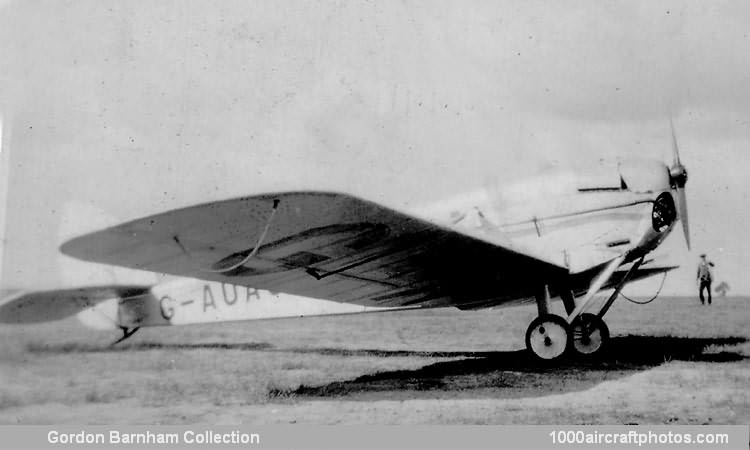11/30/2012. Remarks by Johan Visschedijk: "In 1923 a prize of £500 was offered by the British Secretary of State for Air to encourage the building of an economical light aircraft suitable for club and private flying. The aircraft was to be a single-seater, powered by an engine not exceeding 750 cc. The main object of the competition was to achieve the greatest distance on 1.2 gal (4.5 l) of petrol and the event was to be held at Lympne, UK in October of that year.
Amongst a number of other manufacturers, de Havilland entered two prototypes of the D.H.53 Humming Bird, a low-wing monoplane powered by a single two-cylinder, horizontally-opposed, air-cooled 750 cc Douglas motorcycle engine. Although 59.3 mls (95.5 km) was flown using 1.2 gal (4.55 l) of fuel, neither of the Humming Birds won a prize, but they were the most robust and practical aircraft entered.
The power specification was too low for practical touring and the engines were generally unreliable. Despite the lack of a prize the Humming Bird was the only aircraft to gain an order, when eight were purchased by the RAF for light communications duties. Without the impractical requirements of the competition, the aircraft were powered by a more reliable two-cylinder Tomtit inverted V-engine and the fuel tankage was doubled to 4.8 gal (18.18 l). The eight RAF aircraft (s/n J7268 to J 7273, J7325, J7326) were built to Specification 44/23, and upon completion one was allocated to Northolt, three to the Central Flying School (CFS) at Upavon, two to Netheravon, and the latter two were delivered to the RAE at Farnborough.
An order for two D.H.53s was placed by the Controller of Civil Aviation, Australia.The aircraft (c/n 103, 104) were dispatched by sea and registered in Australia on June 23, 1924 as G-AUAC and G-AUAD respectively. They participated in the Light Aeroplane Competition held at Essendon Aerodrome, Melboume, from November 29 to December 6, 1924 in which one of them piloted by Captain E. J. Jones, forced landed so many times in the same field that it became known as Jones's Paddock. The same aircraft was flown without success by Squadron Leader Anderson in the Australian Aerial Derby held at Richmond Aerodrome, Sydney on January 8, 1925.
Both machines were reregistered on March 28, 1929 (as VH-UAC and VH-UAD respectively), and enjoyed long and eventful careers which included service with the Aero Club of New South Wales. In the early '30s VH-UAC was fitted with an A.B.C. Scorpion engine and it was shipped to Samoa in June 1937."
